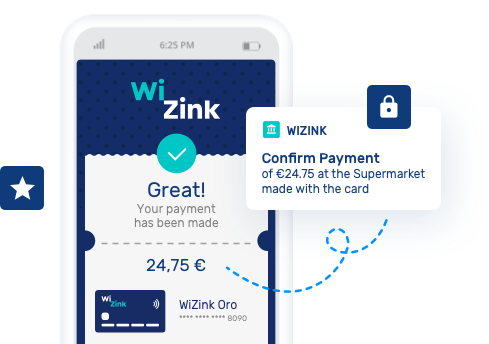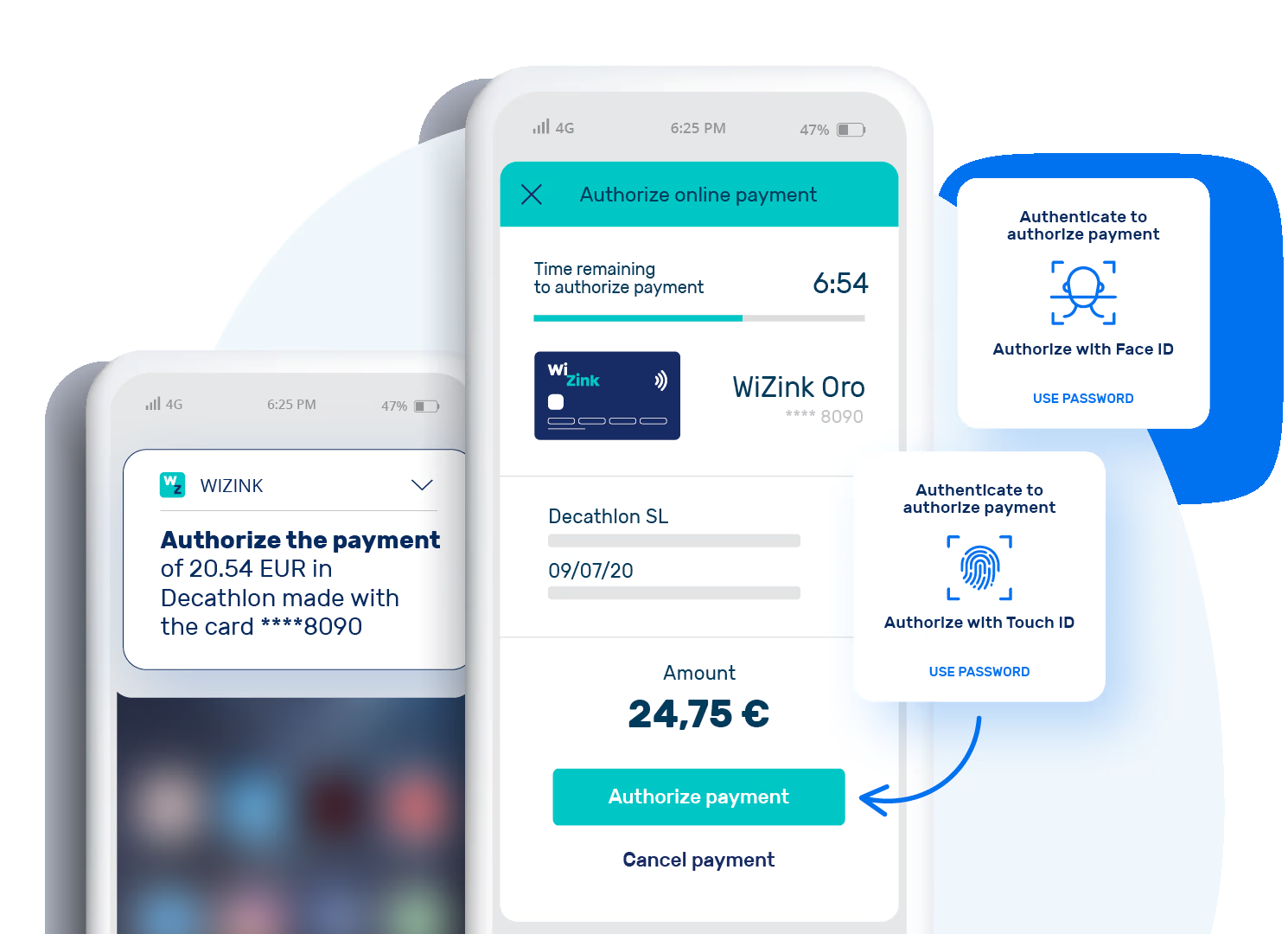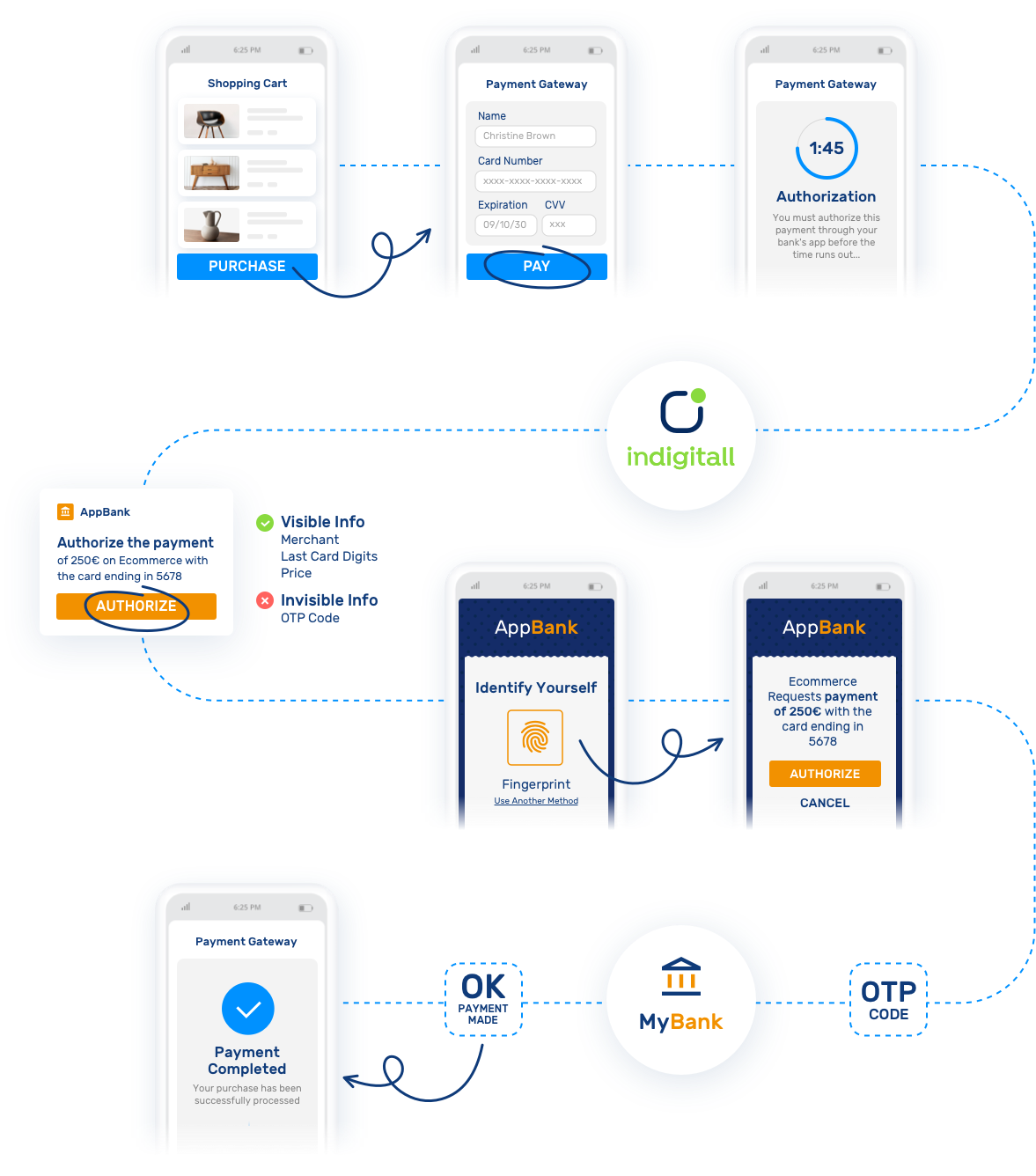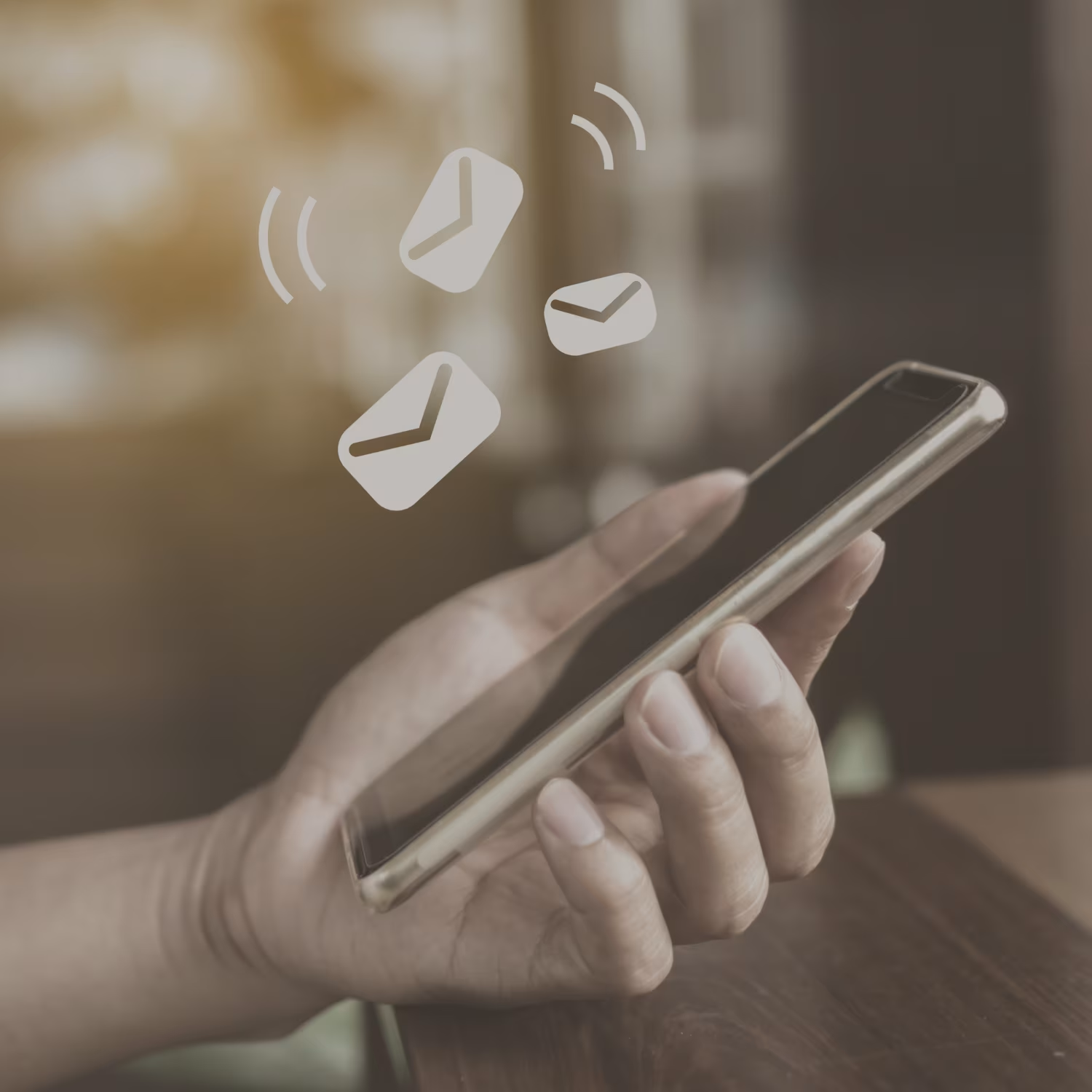Blog
How WiZink Uses Secure Push Notifications to Simplify and Strengthen Online Purchase Authentication


How WiZink Uses Secure Push Notifications to Simplify and Strengthen Online Purchase Authentication
Discover our two-factor authentication for online purchases
Our customer WiZink, the digital consumer bank operates in Spain and Portugal, has been able to make the most of push notifications. It has extended their use to deal with the requirements of European Directive PSD2, specifically the need to implement Strong Customer Authentication (SCA) for online purchases. By using it, not only has it managed to increase the security of its transactions, but it has also considerably improved user experience by helping them to validate monetary movements simply and directly.
The challenge of the digital bank WiZink: adapting to the European Directive PSD2
In 2015, the European Union created a directive to force banks and financial companies to implement systems that help to protect against fraud, especially with regard to online card payments.
The response to this has been the SCA (Strong Customer Authentication), a double-factor authentication method that has been mandatory since December 31, 2020. This reinforced verification forces you to validate your identity with at least two of these three methods:
- With something you know. This is what happens when you are asked to use passwords.
- With something you are. For this, they use biometric systems such as your fingerprint.
- With something you have. Such as, for instance, your mobile phone. It is precisely in this method that the digital bank WiZink saw a clear opportunity to differentiate itself from other banks and also to improve customer satisfaction.
How it Works: Step by Step
-
Transaction Initiation: The user starts an online purchase or transaction.
-
Encrypted Push Notification: An OTP or validation code is sent instantly via encrypted push notification to the user’s app (on mobile or desktop).
-
Simple, Direct Validation: The user confirms the transaction with a single tap, without switching screens or entering extra data.
-
Secure Completion: End-to-end encryption ensures only the intended recipient can receive and act on the notification, eliminating risks of interception or phishing.
WiZink’s innovation through the use of push notifications
Through its collaboration with indigitall, WiZink has developed a validation system focused on app push notifications. Thanks to this, if you are its customer, both your computer and your mobile phone will be valid tools to accredit your identity. When the user goes to carry out a transaction, they will be sent a code directly to their device with which they will be able to confirm their identity quickly, without having to move between different screens.
The OTPs (One Time Passwords) sent to the app by push notifications replace the sending of SMS messages to the user’s mobile. So, not only have we simplified and improved user experience, but we have also considerably reduced SMS message costs since they are not necessary.
Furthermore, it is a system where we provide more security than other methods, such as the sending of OTPs via SMS or the insertion of card contrast data. At indigitall we have developed a point-to-point encryption system because it guarantees that only you will be able to receive notifications from WiZink, thereby eliminating potential fraud due to phishing.

Why Encrypted Push is a Secure Channel
-
End-to-End Encryption: Only the bank and the user can access the notification, protecting sensitive data and preventing fraud.
-
Verified Source: Unlike SMS, where anyone can spoof a sender, encrypted push notifications guarantee the authenticity of the sender.
-
No Phone Number Required: Users don’t need to share their phone number, further safeguarding personal data.
-
Compliance: Fully meets PSD2 and SCA regulatory requirements for secure digital transactions.
Value for Banks and Users
-
Superior User Experience: The process is fast, intuitive, and frictionless—no need to juggle passwords or wait for SMS codes.
-
Higher Acceptance and Conversion Rates: WiZink saw transaction completion rates rise to 90% with push, compared to 78% with SMS.
-
Reduced Costs: Push notifications are significantly more cost-effective than SMS, with some organizations saving up to 60% on messaging costs.
-
Brand Reputation & Satisfaction: Enhanced security and ease of use lead to higher customer satisfaction and improved brand trust.
-
Immediate and Controlled Delivery: Notifications are delivered instantly and can be tracked for compliance and auditing.

All these upgrades also translate into a much more streamlined and simple process for users, who will not have to give their telephone number, so it will be much easier to protect their data. As a result, WiZink has confirmed an improvement in customer satisfaction and higher brand reputation, as well as a higher rate of customer-approved purchases—higher than when compared with SMS which has a transaction percentage of 78% against 90% with push notifications.
Finally and in order to guarantee flexibility in these kinds of transactions, both WiZink and any other customers who want to join this initiative will benefit from a technology developed specifically for this verification method. We have a push channel with servers allocated exclusively to this purpose, and we conduct point-to-point encryption in all app push notifications. With the transactional API, you will see in real time whether the messages are sent correctly and, if you want, we can provide the service on servers that are dedicated and exclusive to your company, adding a VPN to improve the security of communications between both parties.
Fast and Flexible Integration
indigitall’s encrypted push system is designed for rapid, customizable integration, making it easy for financial institutions and other sectors to deploy secure, high-impact communications for sensitive transactions, user verification, and more.
In summary:
WiZink’s adoption of indigitall’s encrypted push notifications exemplifies how banks can deliver secure, compliant, and user-friendly authentication for online transactions—boosting conversion rates, reducing costs, and building customer trust in the digital age.
HOW IT WORKS













